Gyeongsangbuk-do, South Korea – Sunday, June 12th, 2011
After I finished at Gyeongju World, it was just a short bus ride to Gyeongju’s most famous landmark.
Upon arrival, there’s just a short walk up a hill…
…and there it is. Bulguksa Temple.
Bulguksa Temple was first constructed during the golden age of the ancient Silla kingdom between 751 and 774AD. As a westerner learning about pre-World War II Korean history mostly through my travels within Korea, I didn’t have much context for what those particular facts meant, although the fact that Bulguksa was listed as “Historic and Scenic Site No. 1” by the South Korean government and was the first site in Korea to receive UNESCO World Heritage Site listing in 1995 obviously speaks to the temple’s importance today.
Particularly impressive was how a structure that old could be in such good condition. Most of what you see at Bulguksa doesn’t date to the 8th century. The original temple was burned down by invading Japanese armies in the early 1600’s. Numerous re-constructions and renovations followed over the next two hundred years, but it wasn’t until after the Korean War in the late 1960’s and early 1970’s that a major effort was made to completely restore the temple to its original condition based on archaeological evidence. While a few artifacts and stone structures are original, the continuity of Bulguksa has been far from seamless.
These two stone pagodas in the main courtyard, named Dabotap and Seokgatap, are perhaps Bulguksa’s most celebrated feature, as these pieces are original to the 751 construction.


As a temple, Bulguksa is quite a large complex with numerous halls and buildings to freely explore. Several signs offered a little bit of historical or religious context, but for the most part visitors are left to discover Bulguksa Temple on their own.

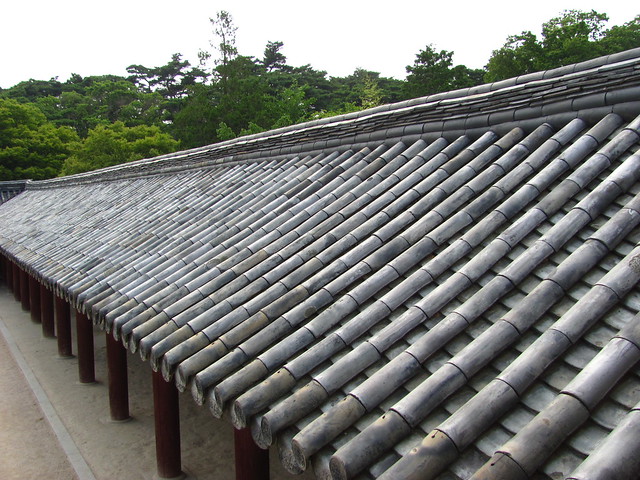
 The craftsmanship is worth taking time to observe the details, whether it was created in the 70’s or 700’s.
The craftsmanship is worth taking time to observe the details, whether it was created in the 70’s or 700’s.
A simple cultural program was taking place in one of the main courtyards.
Many Buddhists still come to Bulguksa for worship, so out of respect no picture taking was allowed inside the halls and shrines, although some of the bronze Buddhas and other devotional figures could still be glimpsed through the openings from a distance outside.
I’m assuming this area wasn’t part of the original design.
A garden near the exit offers visitors the chance to stack stones.
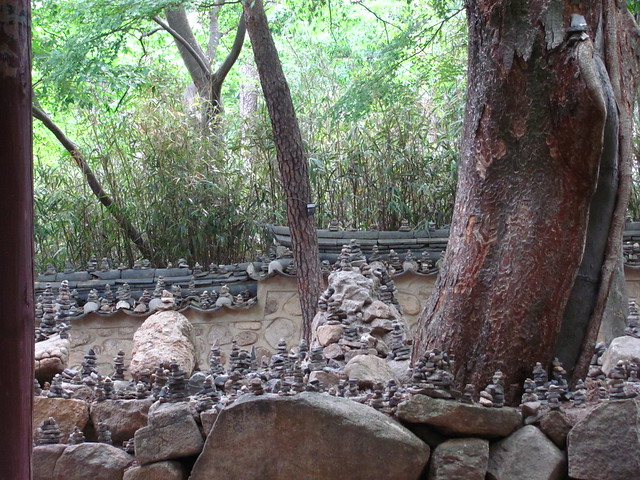
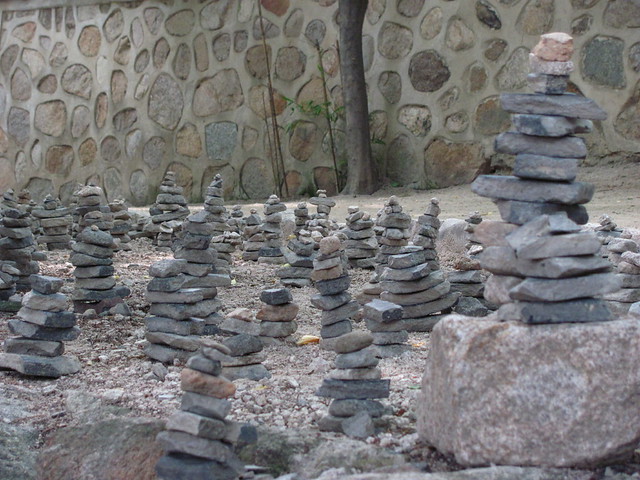 I spent about 45 minutes at Bulguksa before heading to my last destination for the day, Seokguram Grotto. It was built around the same period as Bulguksa and is now covered also under the same UNESCO listing.
I spent about 45 minutes at Bulguksa before heading to my last destination for the day, Seokguram Grotto. It was built around the same period as Bulguksa and is now covered also under the same UNESCO listing.
Seokguram is located atop a hillside next to Bulguksa. While buses are available between the two, many (including myself) opt to walk a winding hillside pathway directly connecting the two, as one would have done in ancient times.
It’s about a 1.7 mile (2.8 km) uphill climb, which ended up taking me about an hour and a half to complete on this fairly warm June afternoon.

 Nevertheless, it’s a very pleasant walk through the sheltering shade of the forest, even offering a dragon-head water fountain along the way.
Nevertheless, it’s a very pleasant walk through the sheltering shade of the forest, even offering a dragon-head water fountain along the way.
Expect to encounter various small animals.
As well as encounters with other tourists, some of whom may even want to take a photo with you. I obliged. Unlike in China, however, the Koreans I met were considerate enough to insist that we pose to take photos with my own camera of our random encounters.
Towards the second half of the trail I was beginning to consider that doing these sites in the opposite sequence, taking the bus to Seokguram and then walking downhill to Bulguksa, would have been the better strategy than the downhill bus ride I chose. (Although doing so would require coming a bit earlier when the bus schedule and public visiting hours would have worked in favor.)
Finally, the parking and bus drop off for Seokguram Grotto. The destination itself is not much further.
The grotto requires a small admission fee (about $4 USD as of 2011), and picture-taking is not allowed, although a gift shop is available nearby to capture any memories that way.
This diagram gives an idea of what’s inside: a small antechamber leading to a larger domed chamber underground, containing a large granite carved Buddha, now protected behind glass.
It’s certainly impressive upon first sight, although people tend to move on quickly as it’s a tight space and there’s little reason to stay once you’ve had the chance to fully regard the granite Buddha. I recall staying around five minutes, which seemed to be quite a bit longer than average. Ultimately, it was the journey to Seokguram Grotto that may be as memorable as Seokguram itself.
People from all over the world have come to Seokguram, many leaving messages on roof tiles along the path. “Happy birthday Bhudda!”
The temple closed soon after I arrived, so it was time to make my way back to the bus stop to catch the last ride of the evening back to the city. While waiting, there was a beautiful vista overlooking Gyeongju to appreciate on my last evening in Korea.
However, after enjoying the view, I soon discovered by word of mouth that the final scheduled bus of the evening from Seokguram was cancelled. The next closest bus returning to town was back at Bulguksa over 2km away… and the last one’s scheduled to depart in a half hour! At least this time I have gravity working with me. Time to hustle!



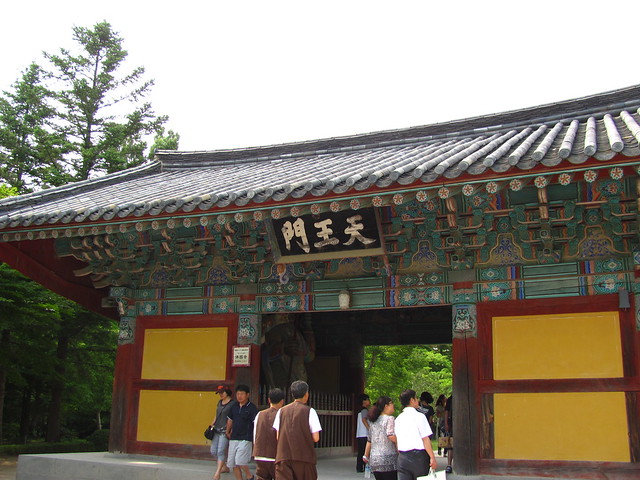












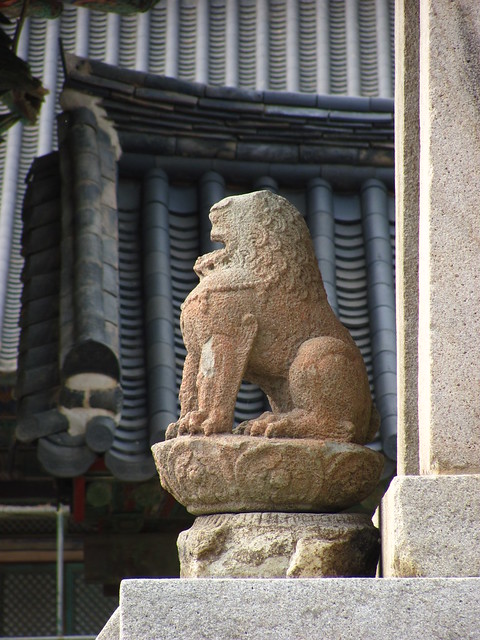











































Comments